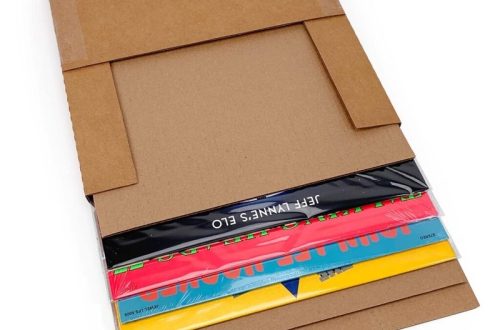Part 1: The Importance of Customization for RC Cars
1. Personalization: Your Unique RC Ride
Customizing your RC car is a fantastic way to express your individuality and create a truly unique vehicle. By adding personal touches, you can make your RC car stand out from the crowd and reflect your personal style.
Custom Paint Jobs: A custom paint job can transform the appearance of your RC car. Whether you prefer a sleek, minimalist design or a bold, eye-catching color scheme, the possibilities are endless.
Custom Decals and Stickers: Decals and stickers are a great way to add personality and style to your RC car. You can choose from a variety of designs, from simple logos to intricate artwork.
Custom Body Shells: By swapping out the stock body shell for a custom one, you can completely change the look of your RC car. Custom body shells are available in a wide range of styles, from realistic replicas to futuristic designs.
2. Performance Enhancement: Taking Your RC Car to the Next Level
Customizing your RC car can also significantly improve its performance. By upgrading key components, you can increase speed, enhance handling, and improve durability.
Upgraded Motor: A more powerful motor can significantly boost your RC car’s acceleration and top speed.
Upgraded Electronic Speed Controller (ESC): An upgraded ESC can improve throttle response and efficiency, allowing for smoother and more precise control.

Part 2: Selecting the Right Upgrades for Your RC Car
1. Assessing Performance Needs
Before diving into upgrades, it’s crucial to assess your RC car’s current performance and identify areas where improvements can be made. This will help you prioritize upgrades and allocate your budget effectively.
Speed: If you’re looking to increase your RC car’s top speed, consider upgrading the motor, electronic speed controller (ESC), or battery. A more powerful motor and a higher-capacity battery can significantly boost acceleration and top speed.
Traction: To improve traction, especially on loose or slippery surfaces, consider upgrading the tires and wheels. Tires with aggressive tread patterns and a softer compound can provide better grip.
Durability: If your RC car is prone to damage, investing in stronger and more durable components can help. This may include upgrading the chassis, suspension components, or electronics.
By understanding your RC car’s limitations and performance goals, you can make informed decisions about which upgrades will yield the best results.
2. Ensuring Compatibility
When selecting upgrades, it’s essential to ensure compatibility with your RC car’s model and existing components. Incompatible upgrades can lead to performance issues, damage to the vehicle, or even void the warranty.
Motor Compatibility: Check the motor’s specifications, such as voltage and KV rating, to ensure it’s compatible with your ESC and battery.
ESC Compatibility: The ESC must be able to handle the power output of the motor and the voltage of the battery.
Battery Compatibility: Ensure the battery’s voltage and connector type match your RC car’s requirements.
Chassis and Suspension Compatibility: Upgraded components, such as shocks and springs, should be compatible with your RC car’s chassis and suspension geometry.
Tire and Wheel Compatibility: The new tires and wheels must fit your RC car‘s axle width and wheel hubs.

Part 3: Upgrading the Chassis and Suspension System
1. Chassis Enhancements: The Foundation of Performance
The chassis is the backbone of an RC car, providing structural support and influencing its overall performance. Upgrading the chassis can significantly enhance your RC car’s handling, durability, and overall driving experience.
Lightweight Chassis: A lighter chassis can improve acceleration, handling, and overall responsiveness. By reducing the car’s weight, you can achieve quicker acceleration and sharper turning.
Stiff Chassis: A stiffer chassis provides better rigidity and reduces flex, which can improve handling and stability, especially at high speeds.
Durable Chassis: A durable chassis is essential for off-road driving. It should be able to withstand impacts, crashes, and the rigors of rough terrain.
By carefully selecting and upgrading your RC car’s chassis, you can lay the foundation for superior performance.
2. Suspension Tuning: A Fine-Tuned Ride
The suspension system plays a crucial role in an RC car‘s performance, absorbing impacts, maintaining tire contact with the ground, and influencing handling and stability. Upgrading or tuning the suspension can significantly enhance your RC car’s off-road capabilities.
Oil-Filled Shocks: Oil-filled shocks provide superior damping and control compared to standard shocks. They can absorb impacts more effectively, improve handling, and reduce body roll.
Spring Rates: Adjusting the spring rates can alter the suspension’s stiffness. Softer springs can improve traction on rough terrain, while stiffer springs can enhance stability at high speeds.
Shock Oil Weight: The weight of the shock oil affects the suspension’s damping characteristics. Thicker oil provides stiffer damping, while thinner oil allows for more suspension travel.
By fine-tuning the suspension settings, you can optimize your RC car’s performance for specific driving conditions. Whether you’re racing on a track or bashing through rough terrain, a well-tuned suspension can make a significant difference.

Part 4: Enhancing the Powertrain and Electronics
1. Upgraded Motors and ESCs: Powering Up Your RC Car
Upgrading your RC car’s motor and electronic speed controller (ESC) can dramatically enhance its performance. These components are the heart of your RC car, providing the power and control needed to achieve high speeds and aggressive maneuvers.
Motor Upgrades: A more powerful motor can significantly increase your RC car’s acceleration and top speed. When choosing a motor, consider factors such as voltage, KV rating, and motor size. A higher KV rating generally results in higher RPMs and faster speeds.
ESC Upgrades: An upgraded ESC can handle higher current draw and provide more precise control over the motor. Look for ESCs with features like programmable timing, braking, and reverse.
By upgrading your motor and ESC, you can unleash the full potential of your RC car and experience exhilarating performance.
2. Improved Electronics: Enhancing Control and Precision
The electronics in your RC car play a vital role in its overall performance and driving experience. Upgrading your transmitter, receiver, and servo can significantly improve control precision, responsiveness, and overall driving satisfaction.
High-Quality Transmitter: A high-quality transmitter with ergonomic design and precise controls can enhance your driving experience. Look for features like adjustable steering sensitivity, throttle curve, and endpoint adjustment.
Reliable Receiver: A reliable receiver ensures a strong and stable connection between your transmitter and RC car. Consider upgrading to a high-performance receiver with advanced features like fail-safe and low-voltage cutoff.
Responsive Servo: A high-quality servo provides precise and responsive steering control. Look for servos with high torque and fast response times.

Part 5: Customizing the Appearance and Body
1. Personalized Body Shells: A Visual Upgrade
One of the most effective ways to personalize your RC car is by customizing its body shell. A unique and eye-catching body shell can make your RC car stand out from the crowd and reflect your personal style.
Custom Paint Jobs: A custom paint job can transform the appearance of your RC car. Whether you prefer a sleek, minimalist design or a bold, eye-catching color scheme, the possibilities are endless.
Custom Decals and Stickers: Decals and stickers are a great way to add personality and style to your RC car. You can choose from a variety of designs, from simple logos to intricate artwork.
Custom Body Shells: By swapping out the stock body shell for a custom one, you can completely change the look of your RC car. Custom body shells are available in a wide range of styles, from realistic replicas to futuristic designs.
2. LED Lights and Accessories: Adding Style and Functionality
Adding LED lights and other accessories can further personalize your RC car and enhance its appearance and functionality.
LED Lights: LED lights can add a dramatic flair to your RC car, especially at night or in low-light conditions. You can choose from a variety of LED lighting options, including headlights, taillights, underglow, and even custom light bars.
Decals and Stickers: Decals and stickers are a great way to add personality and style to your RC car. You can choose from a variety of designs, from simple logos to intricate artwork.
Custom Wheels and Tires: Upgrading to custom wheels and tires can improve your RC car’s performance and appearance. You can choose from a variety of styles and sizes to match your personal preferences.
Aftermarket Parts: There are countless aftermarket parts available to customize your RC car, such as spoilers, wings, and roll cages. These parts can improve the car’s performance and aesthetics.

Part 6: Safety Considerations and Testing
1. Safety Upgrades:
Consider adding protective components such as bumpers or roll cages to minimize damage in the event of a crash or rollover.
2. Testing and Fine-Tuning:
After customizing your RC car, carefully test and fine-tune the upgrades to ensure they integrate smoothly and do not adversely affect the car’s overall performance.
In conclusion, customizing your RC car provides a range of benefits, from personalizing its appearance to enhancing its performance capabilities. By selecting the right upgrades, focusing on different aspects of the car, and taking safety considerations into account, you can transform your RC car into a unique and high-performing vehicle that reflects your individual style and driving preferences.




